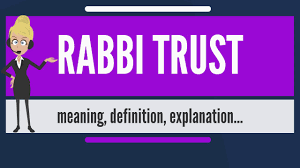The purpose of the trust, who will serve as the trustee or trustees, and which assets will fund the trust are all important decisions to make when setting a trust. You probably already know who you intend to name as your beneficiaries, but you may need to decide how and when the trust assets will be distributed. We’ll guide you on how to set up your trust fund correctly, so you have the most secure plan in place for your child and loved ones’ financial future. We’ll also look at the cost and what it takes to set up a trust fund.
What Is a Trust Fund?
A trust fund is a type of estate planning tool that transfers assets or property from one party to another. A trust fund’s contents can include jewelry, cash, investments, real estate, cars, or just about anything else.
While the grantor, or creator of the trust fund, is alive, the assets are held by the trust fund on their behalf. However, once the grantor dies or becomes incapacitated, control of the trust fund passes to the trustee. Trustees are typically unbiased third parties with no financial stake in the contents of the trust fund.
Trust funds frequently have conditions attached to them, such as the beneficiaries reaching a certain age. This isn’t always the case, as the grantor can structure the trust however they see fit.
Which Type of People Set Up Trust
Setting up a trust for a child used to be reserved mostly for the very wealthy. That isn’t the case any longer. Every year, an increasing number of Americans set up a trust fund, and you don’t have to think of trust as something your child will rely on for the rest of their life. Instead, consider it part of your estate plan, a way to leave something to your child. Because trusts are not subject to probate, you can be confident that your children will receive their trust shortly after your death (or during your life, if you’ve chosen to set a living trust) without the hassle or public nature of the probate process.
We don’t always realize how many assets we have. Just because you aren’t living large doesn’t mean you don’t have plenty to pass on. This is especially true for small business owners.
Why Set Up a Trust Fund?
Families establish trust funds for a variety of reasons. Distribution requirements can be especially beneficial if recipients have not demonstrated a high level of financial responsibility. Trust fund can also be set up specifically for educational expenses or charitable giving. You can also set a trust fund for a special needs child that will continue to fund his or her care after you die.
One significant advantage of trusts is that they avoid probate, which is the often lengthy legal process of authenticating a will. Probate can be costly, depending on your state’s laws and how long it takes to verify details, pay off debts, and distribute assets to designated beneficiaries.
Many people find out how long the probate process takes in their state, and if it’s necessary, a trust account might be a better option.
How to Set Up a Child Trust Fund
Setting up a Trust Fund for your children does not have to be difficult, time-consuming, or expensive. It is possible to keep things simple and streamlined. If you follow these steps, you’ll be done in no time!
- State the purpose of the Trust
- Determine how the Trust will be funded.
- Determine who will be in charge of the Trust.
- Create the Trust and Trust Documents legally.
- Transfer assets to the Trust and fund it
#1. State the purpose of the Trust
Prior you set up the trust fund, you should have a clear understanding of the purpose of the trust fund for your child. Determine whether the Trust will benefit one or all of your children. If certain assets are to be distributed to specific beneficiaries, this must be specified.
One can set up a trust fund for a variety of purposes. It could be for providing college funds, passing down real estate, or passing down other inheritances and assets. Trust Funds are also excellent ways to provide financial security for a special needs loved one.
#2. Make it clear how the Trust will be funded.
Setting a Trust is only the first step. After that, a Trust must be funded so that it can hold assets, provide protection, and one day is distributed. After deciding on the Trust Fund’s purpose, the next step is to determine which assets the Trust should hold. Trusts can be funded with investments, real estate, or cash.
#3. Determine who will be in charge of the Trust.
Choosing a Trustee (the person who will manage the Trust Fund) may be the most important step in the process. Obviously, you must select someone trustworthy because they will be in charge of overseeing the management and distribution of the Trust on behalf of the beneficiaries (likely your children).
#4. Set up the Trust and the Trust documents legally.
Once you’ve decided who will benefit from the Trust, how it will be funded, and who will manage it, it’s time to legally establish your Trust Fund.
This can be accomplished by meeting with an Estate Planning attorney, which is the traditional and expensive route. Alternatively, if you want an equally effective but significantly more affordable and accessible option, using a trusted online service like Trust & Will can be an excellent choice.
#5. Place assets in the Trust
Remember! You aren’t done until the Trust is funded. Funding a Trust essentially means transferring ownership of assets to the Trust. If you transfer any real property into it, you must execute a new deed using Trustee language. Other assets, such as accounts, investments, or policies, will also need to be retitled to become Trust-owned. This is a straightforward procedure that can be completed by contacting financial institutions directly.
Once the Trust is fully funded, the Trustee you designate can begin managing all of the assets contained within it on behalf of your children. If you’ve named yourself as trustee, you should also name a successor trustee who can take over if you can’t. The Trustee is responsible for managing and distributing the Trust’s assets in accordance with the terms of the Trust.
How Long Does It Take To Set Up a Trust Fund?
The process of creating a trust instrument, also known as a deed of trust or a declaration of trust, can be completed quickly. When you factor in the time it takes to determine your goals and how to best achieve them, the timeline becomes significantly longer.
For example, if you want specific assets distributed at specific times or intend to use the trust to qualify for long-term care in addition to leaving assets to your heirs, this will necessitate more planning — and thus more time.
Similarly, to set up a trust fund for a large estate with multiple beneficiaries will take longer than establishing a trust for a single grantee with limited assets.
The more control you want over the assets, the more difficult the process becomes. In addition, transferring a property title necessitates legal documentation, the presence of a notary and witnesses, as well as recording and filing. This step may take some time if you’re funding the trust with real estate or other assets whose titles must be transferred.
Read Also: HOW TO GET MONEY OUT OF A TRUST FUND
What Is the Cost of a Trust Fund Set Up?
The cost of setting up a trust varies. However, because you must transfer ownership of your property, which incurs additional fees, and because a trust fund must be maintained during your lifetime and after your death, the cost will be higher than that of creating a will, which requires neither conveyance of ownership nor ongoing maintenance.
Ask your attorney for an estimate of the associated fees and weigh them against the expected financial benefits before deciding to set a trust. If the benefits outweigh the cost of the set up and maintenance, as well as the hassle of ongoing management, then a trust fund may be right for you.
Common Mistakes Made During a Child Trust Fund Set Up
While everyone enters this process with the best of intentions, there are a few common errors. It’s easiest to avoid these common blunders by first understanding them.
#1. Failure to select the appropriate Trustee
Choosing the wrong Trustee is a common error made by parents. It happens honestly, and it usually stems from the fact that we don’t want to think about the reality of our absence, so we rush to the decision. It may seem easy to choose a close family member because you know they will have your children’s best interests at heart, but you should consider some fairly realistic problems that can arise if you choose someone solely because they are related to you.
Consider factors such as:
- The health of the Trustee
- How far they are away from you
- How old are they?
- When your children are ready to take over the Trust, how old will they be?
- Are they reliable?
- What their basic judgment skills have previously demonstrated
It is critical to take the time to select the right person to manage your children’s Trust Fund. Choosing the wrong person can lead to a variety of complicated issues with real-world consequences (like the Trust being mismanaged). And, unfortunately, if the trustee isn’t doing the job you expected, there’s a good chance you won’t be around to fix it.
#2. Lack of clarity regarding the Trust’s objectives
If you have the wrong goals, or if you are unsure of what your goals are, you may give your young adult children access to money that will cause more harm than good. Thinking about how and when your children should be able to access their money is critical to successfully setting up the most beneficial Trust fund for their financial futures.
Do you want to give your adult children money every year? Once every three years? When you reach a certain age? When do you reach a major life milestone or goal (such as graduating from college or getting married)?
Setting up a useful Trust requires being thorough and thoughtful about how (and when!) your children receive the money in their Trust Fund.
#3. Failure to include asset protection provisions
The asset protection that a Trust can provide if properly set up is a significant benefit. Including spendthrift provisions within a Trust Fund can keep beneficiaries from making financially disastrous mistakes that could result in a large loss.
Another important aspect of having a Trust fund is setting in place a system of checks and balances. Monitoring assets over time can help ensure their long-term security.
#4. Failure to conduct an annual review of the Trust
It is critical to review your Trust on an annual basis. Things change in life, and your Estate Plan must keep up. Having an out-of-date plan can be just as disastrous as not having one at all.
Consistently reviewing your Trust allows you to reassess things like:
- Who have you chosen to serve as a Trustee?
- Have you included every possible beneficiary?
- Are there any beneficiaries who should no longer be included?
- Have there been any births in the family that would necessitate updating your Trust?
- Have there been any fatalities?
- Has your designated Trustee’s mental or physical health changed?
Drawbacks and Alternatives of Trust Funds
The main disadvantage of a trust fund set-up is the cost of doing so. A trust attorney’s services are not inexpensive. The more detailed the trust fund, the longer it will take to set up and, as a result, the cost will likely rise. However, some of the initial costs of establishing a trust can be offset in the long run by reducing probate time and costs.
Please keep in mind that even if a trust is established, a last will and testament are still required. Making a will is usually less expensive than establishing a trust. A will, on the other hand, does not give you nearly as much control over your assets as a trust does. Furthermore, assets transferred through probate are less private than assets transferred through a trust. Furthermore, transferring assets with a will generally take longer than with a trust.
Another way to transfer assets is through UTMA/UGMA custodial accounts. These are typically used to transfer assets to minors and, on occasion, for educational purposes. Custodial accounts, on the other hand, give no control over how the assets are used. The beneficiary has full control of the assets once they reach the required age, which is typically 21 in most states. Furthermore, money in custodial accounts is considered to be owned by the beneficiary and has a greater negative impact on financial aid than a 529 college savings plan.
Is It Possible to Take Money Out of a Trust Fund?
Yes, if you are the trustee, you may take money out of your own trust. You could take money out as you see fit or as required since you have an interest in the trust and its assets. Additionally, you can add or remove assets from the trust.
Why Do Individuals Create Trust?
If you want to make sure that your assets are managed for the benefit of your heirs in accordance with your preferences, think about creating a trust. Maintain your assets while averting the taxes and probate fees connected with the transfer of assets through a will. Create a tax-benefitted charitable gift.
How Is a Trust Fund Operated?
A trust fund is a mechanism for estate planning that enables one to set money and/or other assets aside for distribution to the trust’s beneficiaries in the future. They are created with the guidance of an estate planning lawyer to hold assets for another person.
What Occurs if a Trust Fund Expires?
The trustees have a responsibility to distribute the trust’s assets to the appropriate beneficiaries upon termination of the trust. The trustees may be liable for breach of trust if they fail to distribute to the right beneficiary.
How Are Trusts Funded?
The trust may distribute money in a lump sum, as a proportion of the assets, over time in small amounts, or even in accordance with the trustee’s evaluations. Whatever the grantor chooses, it must be specified in the trust agreement created when they first established the trust.
How To Set Up a Trust Fund FAQs
How much does it cost to set a trust fund up?
A basic trust could be created for less than $100 using a digital provider. In some areas, having a lawyer set up a trust fund for a larger or more intricate estate can cost $3,000 or more.
Is it difficult to set up a trust fund?
A trust fund is complicated and frequently requires the advice of an attorney to set up, however, there are internet resources for do-it-yourselfers.






